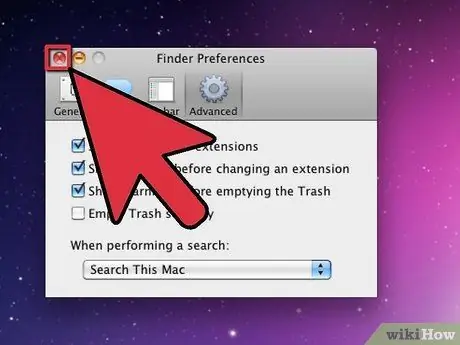- Author Jason Gerald [email protected].
- Public 2023-12-16 10:50.
- Last modified 2025-01-23 12:04.
The file extension tells your computer what type of file it is and what software on your computer to use to open the file. The easiest way to change a file's extension is to save the file as a different file type than in a software program. Changing the file extension by changing the file name will not change the file type, but will cause your computer to misrecognize the file. On Windows and Mac OS X, file extensions are often hidden. This article describes how to save files as other file types in most software programs, and how to show file extensions in Windows and Mac OS X.
Step
Method 1 of 4: Changing File Extensions in Almost Every Software Program

Step 1. Open a file with the default software program

Step 2. Click the File menu, then click Save As

Step 3. Choose a location to save the file

Step 4. Name the file

Step 5. In the Save As dialog box, look for the dropdown menu labeled Save As Type or Format

Step 6. Select a new file type for the file from the dropdown menu

Step 7. Click the Save As button
The original file will still open in the software program.

Step 8. Find the new file where you saved it
Method 2 of 4: Show File Extensions in Windows

Step 1. Open Control Panel
Click the Start menu, then click Control Panel. If you are using Windows 8, click here.

Step 2. In Control Panel, click Appearance and Personalization
In Windows 8, on the ribbon, click Options

Step 3. Click Folder Options

Step 4. In the Folder Options dialog box, click the View tab

Step 5. Make the file extension visible
In the Advanced settings list, scroll down until you see "Hide extensions for known file types". Click the box to uncheck it.

Step 6. Click Apply, then click OK

Step 7. Open the Windows Explorer file browser to see the file extensions
Method 3 of 4: Show File Extensions in Windows 8

Step 1. Open Windows Explorer

Step 2. Click the View tab

Step 3. In the View/hide section, check the "File name extensions" box

Step 4. If you open a new Windows Explorer window, the file extension will be visible
Method 4 of 4: Show File Extensions on Mac OS X

Step 1. Select a Finder window or open a new Finder window
You can also click Desktop to switch to Finder.

Step 2. Click the Finder menu, then click Preferences

Step 3. In the Finder Preferences window, click Advanced

Step 4. Click Show all filename extensions to put a check mark

Step 5. Close the Finder Preferences window

Step 6. Open a new Finder window
The files will show the extension.






